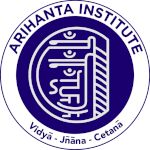
Aug 9
2025
9AM-12PM PDT
2025
9AM-12PM PDT
9:00 am - 9:20 am
“Jain Yoga Studies at Arihanta Institute”
20 mins
For Jains, yoga is a spiritual practice (sādhanā) that facilitates the liberation of the true self. The illustrious Jain saint Ācārya Haribhadra Sūri, perhaps the first to define a structured yoga system, formulated it as a five-stage path. These stages include Adhyātma-yoga (introspection), Bhāvanā-yoga (blissful cultivation), Dhyāna-yoga (meditation), Samatā-yoga (equanimity), and Vṛtti-saṃkṣaya-yoga (cessation of mental inclinations).
Jain Yoga is a time-tested system rooted in five Mahāvratas (five supreme vows), which are essential for transitioning from ordinary existence to a life of righteous conduct. This transition is marked by the cultivation of purity in thoughts, control over emotions, and clarity in contemplation. In this keynote lecture, the presenter will discuss the importance of rigorous research and scholarship in studying and practicing Jain yoga, with a particular focus on Dhyāna-yoga, which plays a vital role in the pursuit of liberation from mundane worldly existence.
Dhyāna-yoga, regarded as the key to one’s transforming an ordinary practitioner into a determined aspirant, is central to Jain sādhanā. It encompasses four progressive meditative stages of sorrowful meditation (Ārta-dhyāna), wrathful meditation (Raudra-dhyāna,) pious meditation (Dharma-dhyāna), and blissful meditation (Śukla-dhyāna). The first two stages are detrimental to contemplative success and an aspirant must overcome those to achieve spiritual progress, while the final two stages lead to the wearing away of karma and, eventually, final liberation, or mokṣa. Throughout these stages, mantra recitation (japa) can serve as a powerful tool to foster concentration and gradually alleviate anxieties, mental trepidations and uncertainties which all dissipate when one progresses to higher stages of contemplative meditation.
At Arihanta Institute, we are dedicated to providing immaculate Jain education and sharing the timeless wisdom of the Jain tradition through a world-class online educational platform with global reach. In recognition of the importance of Jain yoga for spiritual and intellectual growth, we have established the Center for the Study of Jain Yoga. This center aims to advance scholarship, critical research, and education on this important subject. The author will also share the key features and vision behind this groundbreaking initiative.
Read MoreRead LessJain Yoga is a time-tested system rooted in five Mahāvratas (five supreme vows), which are essential for transitioning from ordinary existence to a life of righteous conduct. This transition is marked by the cultivation of purity in thoughts, control over emotions, and clarity in contemplation. In this keynote lecture, the presenter will discuss the importance of rigorous research and scholarship in studying and practicing Jain yoga, with a particular focus on Dhyāna-yoga, which plays a vital role in the pursuit of liberation from mundane worldly existence.
Dhyāna-yoga, regarded as the key to one’s transforming an ordinary practitioner into a determined aspirant, is central to Jain sādhanā. It encompasses four progressive meditative stages of sorrowful meditation (Ārta-dhyāna), wrathful meditation (Raudra-dhyāna,) pious meditation (Dharma-dhyāna), and blissful meditation (Śukla-dhyāna). The first two stages are detrimental to contemplative success and an aspirant must overcome those to achieve spiritual progress, while the final two stages lead to the wearing away of karma and, eventually, final liberation, or mokṣa. Throughout these stages, mantra recitation (japa) can serve as a powerful tool to foster concentration and gradually alleviate anxieties, mental trepidations and uncertainties which all dissipate when one progresses to higher stages of contemplative meditation.
At Arihanta Institute, we are dedicated to providing immaculate Jain education and sharing the timeless wisdom of the Jain tradition through a world-class online educational platform with global reach. In recognition of the importance of Jain yoga for spiritual and intellectual growth, we have established the Center for the Study of Jain Yoga. This center aims to advance scholarship, critical research, and education on this important subject. The author will also share the key features and vision behind this groundbreaking initiative.
What is “Jain” yoga?
Presiding:  Alba Rodríguez Juan
Alba Rodríguez Juan
 Alba Rodríguez Juan
Alba Rodríguez JuanJain yoga represents one of the most understudied yoga traditions. This panel therefore examines the intersection of Jain traditions and yoga, focusing on the concept of anāhata nāda (unstruck sound) and its role in Jain meditative and yogic practices, both historical and contemporary.
The first presentation explores the medieval Jain text Yogapradīpa, highlighting its innovative integration of anāhata nāda as a meditative focus tied to Jain soteriology. By contrasting Jain approaches to nāda with Śaiva and Vedic traditions, this study illuminates a distinct Jain yogic path emphasizing the dissolution of praṇavanāda (the sound of Oṃ) and the realization of the pure soul. The presentation further examines Jain yantras like the siddhacakra as visual aids for understanding sound as a means toward achieving liberation.
The second presentation shifts to the contemporary era, analyzing Acharya Sushil Kumar’s fusion of Jain doctrine with haṭha-yoga practices during his teaching in the United States. Kumar’s Song of the Soul showcases his theory of sacred sound, merging medieval haṭha-yoga influences with Jain ethics and mantras to create a unique form of “engaged Jain yoga.” This presentation disentangles the Jain and non-Jain elements in Kumar’s teachings, tracing continuities with historical Jain practices while highlighting adaptations to modern contexts. Together, these studies reveal how Jainism interacts with broader yoga traditions to create dynamic and evolving practices.
Read MoreRead LessThe first presentation explores the medieval Jain text Yogapradīpa, highlighting its innovative integration of anāhata nāda as a meditative focus tied to Jain soteriology. By contrasting Jain approaches to nāda with Śaiva and Vedic traditions, this study illuminates a distinct Jain yogic path emphasizing the dissolution of praṇavanāda (the sound of Oṃ) and the realization of the pure soul. The presentation further examines Jain yantras like the siddhacakra as visual aids for understanding sound as a means toward achieving liberation.
The second presentation shifts to the contemporary era, analyzing Acharya Sushil Kumar’s fusion of Jain doctrine with haṭha-yoga practices during his teaching in the United States. Kumar’s Song of the Soul showcases his theory of sacred sound, merging medieval haṭha-yoga influences with Jain ethics and mantras to create a unique form of “engaged Jain yoga.” This presentation disentangles the Jain and non-Jain elements in Kumar’s teachings, tracing continuities with historical Jain practices while highlighting adaptations to modern contexts. Together, these studies reveal how Jainism interacts with broader yoga traditions to create dynamic and evolving practices.
9:30 am - 9:50 am
“Silent Sounds and Subtle Spheres: The Secrets of Anāhata Nāda in the Jain Yoga of the Yogapradīpa”
20 mins
The concept of anāhata nāda (unstruck sound) is a significant element in medieval yoga traditions and it appears as an object of meditation in the Jain Yogapradīpa. This text, composed in an era influenced by both Jain and Śaiva traditions, offers a unique interpretation of meditation practices that resonate with both haṭhayoga and Jain soteriology. Verses 115–122 of the Yogapradīpa describe the anāhata nāda as a subtle, uninterrupted sound experienced beyond the senses, located beneath the dvādaśānta (twelve ends), and associated with supreme bliss (paramānanda).
Unlike classical Jain meditation, which traditionally emphasizes liberation through right perception, knowledge, and conduct, the Yogapradīpa introduces, next to others, a broader, more esoteric focus on the unstruck sound as a gateway to experiencing the pure soul (siddha). Ācārya Kalāpūrṇasūri, in his Gujarati text Dhyānvicār (1988), elaborates on this concept by linking the spiraloid representations of anāhata in Jain yantras, such as the siddhacakra, to the direct experience of the pure soul. He argues that the anāhata visually represents the silence that follows the sound of Oṃ, symbolizing the transcendence of worldly attachments and the realization of the soul’s innate purity.
Ellen Gough, in her unpublished work, explores these connections further, noting how the Yogapradīpa’s use of anāhata nāda parallels the non-dual Śaiva tantric traditions, yet remains distinct in its emphasis on Jain concepts of karma and liberation. By focusing on the dissolution of praṇavanāda (the sound of Oṃ), the Yogapradīpa diverges from Vedic interpretations and affirms Jain soteriological principles, which makes this text a remarkable intersection of Indic spiritual practices.
This presentation will explore the relevant verses and their implications for understanding the Jain path to liberation through yoga, particularly in contrast to other contemporary traditions. Additionally, it will lay the groundwork for further exploration into present-day Jain practices.
Read MoreRead LessUnlike classical Jain meditation, which traditionally emphasizes liberation through right perception, knowledge, and conduct, the Yogapradīpa introduces, next to others, a broader, more esoteric focus on the unstruck sound as a gateway to experiencing the pure soul (siddha). Ācārya Kalāpūrṇasūri, in his Gujarati text Dhyānvicār (1988), elaborates on this concept by linking the spiraloid representations of anāhata in Jain yantras, such as the siddhacakra, to the direct experience of the pure soul. He argues that the anāhata visually represents the silence that follows the sound of Oṃ, symbolizing the transcendence of worldly attachments and the realization of the soul’s innate purity.
Ellen Gough, in her unpublished work, explores these connections further, noting how the Yogapradīpa’s use of anāhata nāda parallels the non-dual Śaiva tantric traditions, yet remains distinct in its emphasis on Jain concepts of karma and liberation. By focusing on the dissolution of praṇavanāda (the sound of Oṃ), the Yogapradīpa diverges from Vedic interpretations and affirms Jain soteriological principles, which makes this text a remarkable intersection of Indic spiritual practices.
This presentation will explore the relevant verses and their implications for understanding the Jain path to liberation through yoga, particularly in contrast to other contemporary traditions. Additionally, it will lay the groundwork for further exploration into present-day Jain practices.
9:50 am - 10:10 am
“Engaged Jain Yoga: Listening for haṭha-yoga’s unstruck sound (anāhata-nāda) in Acharya Sushil Kumar’s Song of the Soul”
20 mins
Acharya Sushil Kumar (1926-1994) was a Śvetāmbara Jain monk who broke the traditional monastic code to not travel by any means other than foot. In doing so, he made the long journey to the United States of America where he taught, among other things, haṭha-yoga overlaid by Jain doctrine, beginning in the 1970s. Central to Kumar's haṭha-yoga teachings was a detailed theory of sacred sound which drew from a number of Jain and non-Jain sources, including the Yogaśāstra and Haṭhayogapradīpikā, and resulted in his famous book Song of the Soul: An Introduction to the Namokar Mantra and the Science of Sound.
Drawing from Song of the Soul, this presentation unpacks Acharya Sushil Kumar's theory and practice of listening to the unstruck sound (anāhata-nāda) within. We will observe how Kumar clearly drew his practices from well-known haṭha-yoga texts which were already democratizing haṭha-yoga beyond sectarian lines in medieval South Asia. But we will also observe how Kumar overlays his own Jain tradition's mantras and theories onto these well-known haṭha-yoga practices.
While Song of the Soul maintains a commitment to Jain ethics and karma doctrine broadly speaking, these commitments become intermixed with haṭha-yoga's quite different practices and soteriological commitments, and yet Kumar maintains that he is teaching "Jain yoga" What we observe, then, is a form of what I call "engaged Jain yoga" or a yoga that results when Jains engage with other non-Jain yoga systems as they build their own yoga systems.
Kumar's "engaged Jain yoga" draws from historical precedent set by medieval Jain authors who drew from non-Jain yoga systems to create their own unique systems of practice. We will disentangle Kumar's yoga to show how Jain and non-Jain elements combine to create his contemporary yoga system and theory of sound, thereby observing both continuities and discontinuities in Jain yoga as well as how the past continues to inform the present.
Read MoreRead LessDrawing from Song of the Soul, this presentation unpacks Acharya Sushil Kumar's theory and practice of listening to the unstruck sound (anāhata-nāda) within. We will observe how Kumar clearly drew his practices from well-known haṭha-yoga texts which were already democratizing haṭha-yoga beyond sectarian lines in medieval South Asia. But we will also observe how Kumar overlays his own Jain tradition's mantras and theories onto these well-known haṭha-yoga practices.
While Song of the Soul maintains a commitment to Jain ethics and karma doctrine broadly speaking, these commitments become intermixed with haṭha-yoga's quite different practices and soteriological commitments, and yet Kumar maintains that he is teaching "Jain yoga" What we observe, then, is a form of what I call "engaged Jain yoga" or a yoga that results when Jains engage with other non-Jain yoga systems as they build their own yoga systems.
Kumar's "engaged Jain yoga" draws from historical precedent set by medieval Jain authors who drew from non-Jain yoga systems to create their own unique systems of practice. We will disentangle Kumar's yoga to show how Jain and non-Jain elements combine to create his contemporary yoga system and theory of sound, thereby observing both continuities and discontinuities in Jain yoga as well as how the past continues to inform the present.
Why do we chant mantras in yoga?
Presiding: 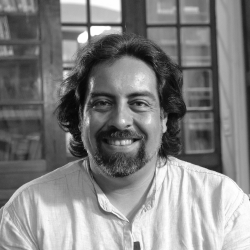 Borayin Larios
Borayin Larios
 Borayin Larios
Borayin LariosThis panel explores the evolution and reinterpretation of mantra practices within the context of Haṭhayoga, tracing their development from medieval traditions to modern adaptations. The first presentation examines the medieval Śivayogapradīpikā, focusing on its unique teachings on the ajapā mantra—the natural sound of the breath—and its integration into prāṇāyāma practice. Through the interiorization of the disyllabic haṃsa, its reversal into so ’ham, and its ultimate condensation into the monosyllabic oṃ, the text reframes the Vedic Gāyatrī mantra within a yogic framework, positioning mantra as a crucial tool for achieving the highest prāṇāyāmic state of kevalakumbhaka.
The second presentation shifts to the modern period, analyzing Paramahansa Yogananda’s dissemination of simplified mantra practices through his Yogoda method. By adapting esoteric haṭha techniques like haṃ-sa (Hong-Saw) and oṃ into accessible exercises, Yogananda introduced energy manipulation and concentration practices to a global audience. Together, these papers reveal the enduring adaptability of mantra practices in Haṭhayoga across historical and cultural contexts.
Read MoreRead LessThe second presentation shifts to the modern period, analyzing Paramahansa Yogananda’s dissemination of simplified mantra practices through his Yogoda method. By adapting esoteric haṭha techniques like haṃ-sa (Hong-Saw) and oṃ into accessible exercises, Yogananda introduced energy manipulation and concentration practices to a global audience. Together, these papers reveal the enduring adaptability of mantra practices in Haṭhayoga across historical and cultural contexts.
10:40 am - 11:00 am
“The Role of Mantra within Premodern Haṭhayoga”
20 mins
In most medieval Yogaśāstras that delineate Haṭhayoga, teachings on mantra are largely absent or assume a lesser status. The Dattātreyayogaśāstra states that Mantrayoga can be “mastered by anyone” and that the “weak are entitled” to practice it. Likewise, mantrasādhana is listed as one of the obstacles to yoga practice. The Haṭhapradīpikā tells that a yogin who has attained samādhi becomes “invincible to all weapons” and is “beyond the grasp of mantras and yantras.” A few texts, however, appear to reframe mantra in a more favorable light. In the Śivayogapradīpikā, mantra is interiorized within a prāṇāyāma environment, specifically in the form of the ajapā, the “unuttered” mantra—that is, the natural sound of the inhalation and exhalation. This type of interiorized yogic mantra thus holds a more positive soteriological value within the context of prāṇāyāma than does traditional mantra japa on its own. The ajapā mantra is also described in the texts as the Gāyatrī ajapā, and thus in this way the interiorization of mantra might also be viewed as the yogic appropriation of the principal Vedic Gāyatrī mantra (Mallinson and Singleton 2017).
After taking stock of the general role of mantra within premodern Haṭhayoga, this paper will introduce and analyze the Śivayogapradīpikā’s unique teachings on the ajapā within the context of its Haṭhayoga. I show that the unuttered mantra of the breath, comprised of the disyllabic haṃsa, is first reversed to so ’ham, and then in turn is fashioned into the monosyllabic oṃ. Through the success of yogic praxis, the all-important Vedic Gāyatrī mantra is thus re-interiorized within the yogic body in the form of oṃ—ultimately leading the yogin to the highest prāṇāyāmic state of kevalakumbhaka.
Read MoreRead LessAfter taking stock of the general role of mantra within premodern Haṭhayoga, this paper will introduce and analyze the Śivayogapradīpikā’s unique teachings on the ajapā within the context of its Haṭhayoga. I show that the unuttered mantra of the breath, comprised of the disyllabic haṃsa, is first reversed to so ’ham, and then in turn is fashioned into the monosyllabic oṃ. Through the success of yogic praxis, the all-important Vedic Gāyatrī mantra is thus re-interiorized within the yogic body in the form of oṃ—ultimately leading the yogin to the highest prāṇāyāmic state of kevalakumbhaka.
11:00 am - 11:20 am
“Yoga to the People: Hong-Saw and Om Mantras in Paramahansa Yogananda’s Yogoda and Kriya Yoga”
20 mins
Paramahansa Yogananda was among the first global yogis to adapt esoteric haṭha yogic practices to an uninitiated audience. Together with the calisthenic Energization Exercises, Yogananda bundled Anglicized versions of basic mantras—namely Hong-Saw (from haṃ-sa) and Om—into the introductory Yogoda method, which he disseminated via pamphlets and mail order lessons. Such techniques were meant to introduce a wide audience to the basics of energy manipulation and concentration, not so unlike the postural and chanting practices we find in yoga studios today. More complex versions of the techniques, meanwhile, still survive in his Kriya Yoga method, a living tradition that reflects the medieval synthesis of haṭha yoga.
Read MoreRead Less_orig)
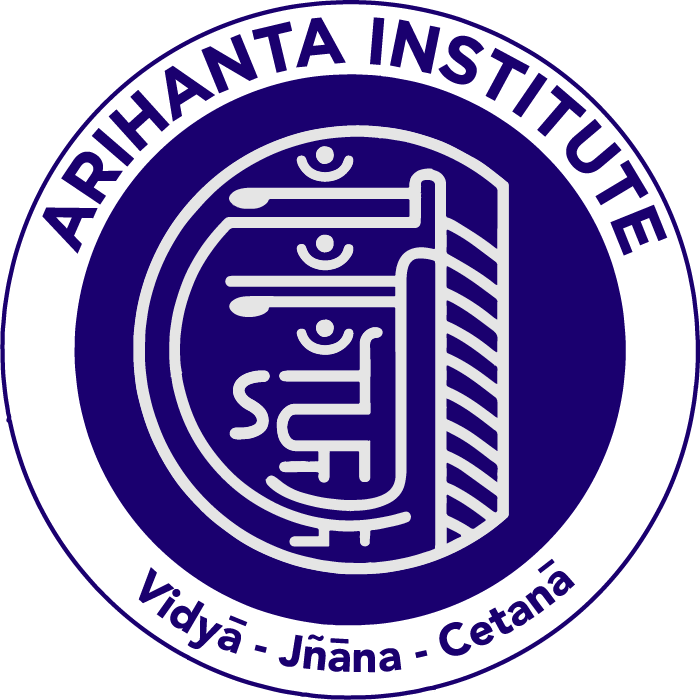
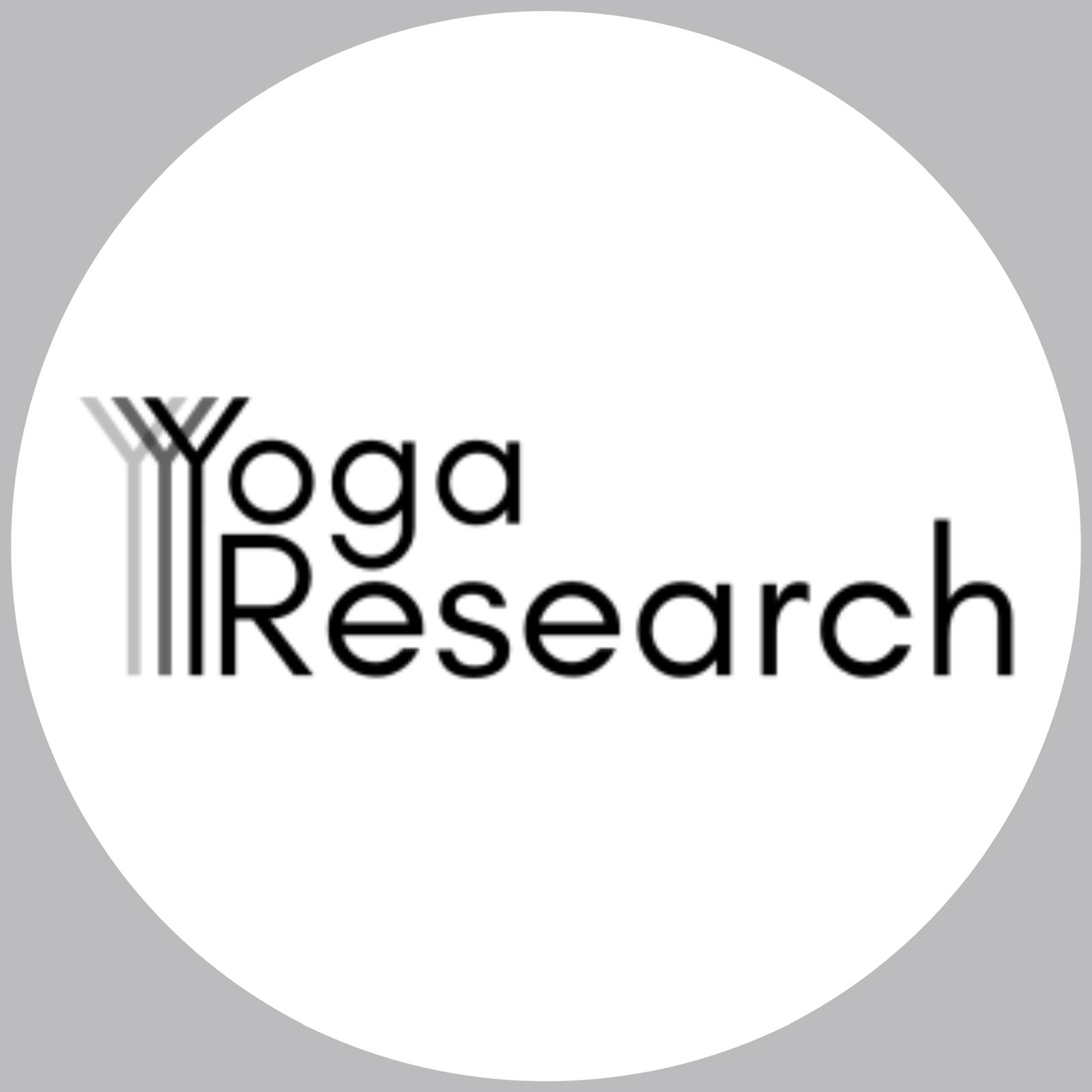
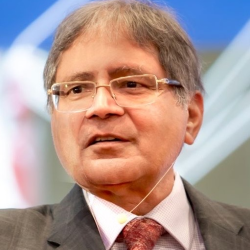 Keynote Speaker: Parveen Jain
Keynote Speaker: Parveen Jain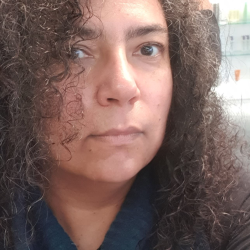 Panelist: Corinna May Lhoir
Panelist: Corinna May Lhoir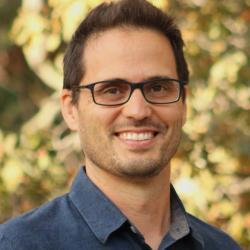 Panelist: Christopher Jain Miller
Panelist: Christopher Jain Miller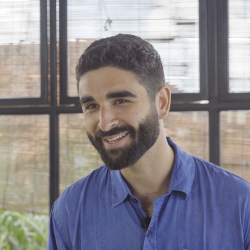 Panelist: Seth Powell
Panelist: Seth Powell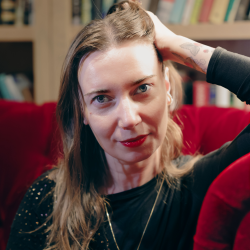 Panelist: Anya Foxen
Panelist: Anya Foxen